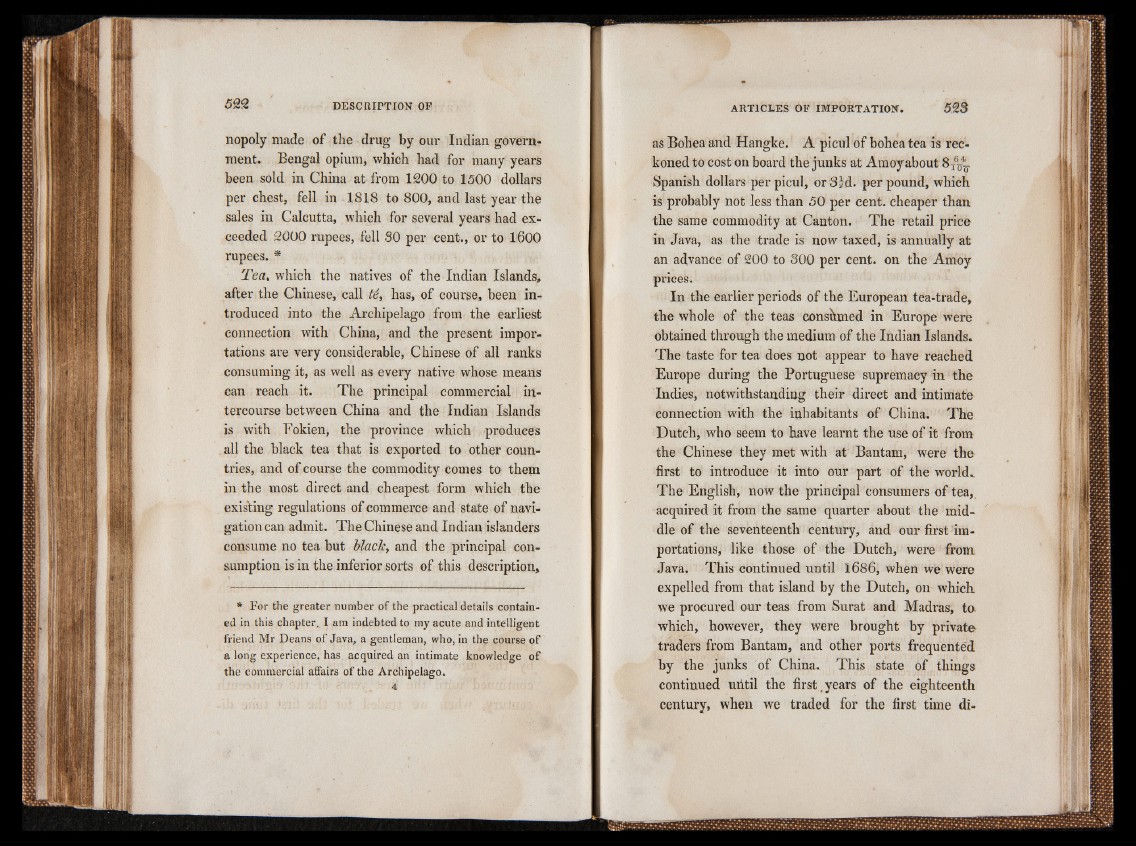
nopoly made of the drug by our Indian government.
Bengal opium, which had for many years
been sold in China at from 1200 to 1500 dollars
per chest, fell in 1818 to 800, and last year the
sales in Calcutta, which for several years had exceeded
2000 rupees, fell 80 per cent., or to 1600
rupees. *
Tea, which the natives of the Indian Islands,
after the Chinese, call te, has, of course, been introduced
into the Archipelago from the earliest
connection with China, and the present importations
are very considerable, Chinese of all ranks
consuming it, as well as every native whose means
can reach it. The principal commercial intercourse
between China and the Indian Islands
is with Fokien, the province which produces
all the black tea that is exported to other countries,
and of course the commodity comes to them
in the most direct and cheapest form which the
exis'ting regulations of commerce and state of navigation
can admit. The Chinese and Indian islanders
consume no tea but black, and the principal consumption
is in the inferior sorts of this description,
* For the greater number of the practical details contained
in this chapter, I am indebted to my acute and intelligent
friend Mr Deans of Java, a gentleman, who, in the course of
a long experience, has acquired an intimate knowledge of
the commercial affairs of the Archipelago.
4
as Bohea and Hangke. A picul of bohea tea is reckoned
to cost on board the junks at Amoy about 8 /^
Spanish dollars per picul, orB&d. per pound, which
is probably not less than 50 per cent, cheaper than
the same commodity at Canton. The retail price
in Java, as the trade is now taxed, is annually at
an advance of 200 to 800 per cent, on the Amoy
prices.
In the earlier periods of the European tea-trade,
the whole of the teas consumed in Europe were
obtained through the medium of the Indian Islands.
The taste for tea does not appear to have reached
Europe during the Portuguese supremacy in the
Indies, notwithstanding their direct and intimate
connection with the inhabitants of China. The
Dutch, who seem to have learnt the use of it from
the Chinese they met with at'Bantam, were the
first to introduce it into our part of the world.
The English, now the principal consumers of tea,
acquired it from the same quarter about the middle
of the seventeenth century, and our first importations,
like those of the Dutch, were from
Java. This continued until 1686, when we were
expelled from that island by the Dutch, on which
we procured our teas from Surat and Madras, to
which, however, they were brought by private
traders from Bantam, and other ports frequented
by the junks of China. This state of things
continued uritil the first , years of the eighteenth
century, when we traded for the first time di